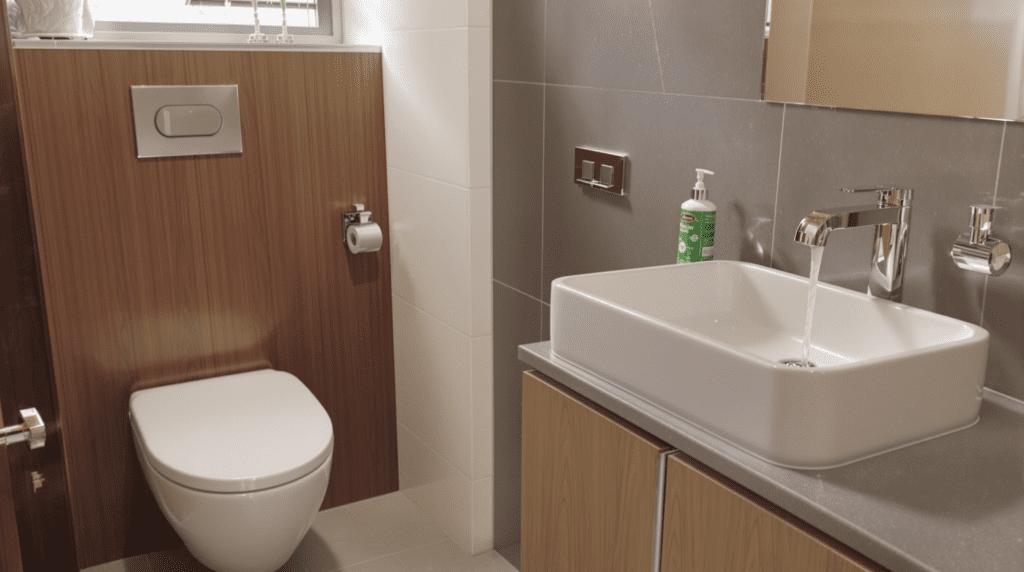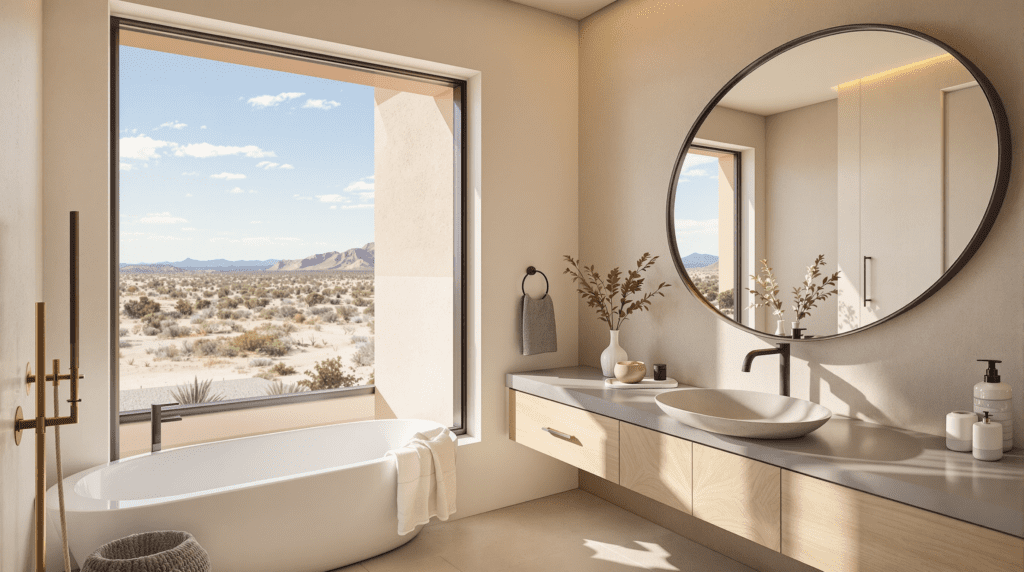Imagine stepping into a sanctuary – a space where tranquility meets responsibility, where minimalist elegance embraces mindful living. This isn’t some far-off Zen retreat; it’s the potential of your own bathroom, reimagined through the lens of Japandi style fused with smart water conservation. Combining the rustic minimalism of Japanese design with the functional simplicity of Scandinavian aesthetics, Japandi offers a perfect framework for creating a bathroom that’s not only stunningly serene but also remarkably sustainable. It’s about achieving more with less – less clutter, less waste, and significantly less water.

What Defines a Japandi Style Water Conservation Bathroom?
At its heart, this concept marries the core tenets of Japandi – clean lines, natural materials, a neutral palette, and a focus on craftsmanship – with a conscious effort to minimize water usage. It’s about intentional choices, selecting fixtures and materials that are both beautiful and eco-efficient. Think muted tones (beiges, creams, grays, soft blacks), natural wood accents (bamboo, light oak, teak), textured ceramics, and an abundance of natural light, all working in harmony with high-efficiency toilets, low-flow showerheads, and water-saving faucets. This isn’t just a trend; it’s a sophisticated approach to sustainable living, proving that style and substance can coexist beautifully.
How Can I Design a Japandi Bathroom That Also Saves Water?
Implementing this dual concept requires thoughtful planning. It begins with prioritizing function alongside form. Instead of viewing water conservation as a limitation, see it as an integral part of the Japandi philosophy – eliminating the unnecessary. Key strategies include:
- Selecting High-Efficiency Fixtures: This is paramount. Look for WaterSense labeled products, which are certified by the EPA to use at least 20% less water than standard models without sacrificing performance.
- Choosing Sustainable Materials: Opt for materials like reclaimed wood, bamboo (highly renewable), recycled glass tiles, or natural stone sourced responsibly. These align perfectly with the Japandi eco-conscious ethos.
- Embracing Minimalism: A clutter-free space inherently feels calmer and requires fewer resources. This principle extends to water usage – do you really need that rainfall showerhead that uses gallons per minute, or would a targeted, efficient model suffice?
- Incorporating Plants: Certain plants thrive in humid bathroom environments and can improve air quality, enhancing the natural, serene feel central to Japandi design.

Best Low-Flow Fixtures for Japandi Style Bathrooms
Merging aesthetics with efficiency is easier than ever. Many manufacturers now offer fixtures that are both WaterSense certified and beautifully designed to complement minimalist styles:
- Toilets: Look for dual-flush models (offering different flush volumes for liquid and solid waste) or single-flush high-efficiency toilets (HETs) using 1.28 gallons per flush (GPF) or less. Minimalist designs with concealed trapways fit the Japandi look perfectly. According to the EPA WaterSense program, replacing older toilets can save the average family nearly 13,000 gallons of water per year.
- Showerheads: WaterSense labeled showerheads use no more than 2.0 gallons per minute (GPM), compared to the standard 2.5 GPM. Explore options with clean lines in finishes like matte black, brushed nickel, or chrome that complement wood and stone.
- Faucets: Bathroom sink faucets with the WaterSense label use a maximum of 1.5 GPM. Aerators can often be added to existing faucets to reduce flow. Choose simple, elegant designs – single-handle or minimalist widespread faucets work well.
Achieving Minimalist Water Conservation in a Japandi Bathroom
The synergy between Japandi minimalism and water conservation is natural. Both prioritize efficiency, functionality, and the elimination of excess. Consider these techniques:
- Layout Optimization: Plan plumbing to minimize pipe runs, potentially reducing heat loss for hot water.
- Leak Detection: Regularly check for leaks. Even a small drip can waste significant amounts of water over time.
- Mindful Habits: Japandi encourages mindfulness. This extends to habits like turning off the tap while brushing teeth or taking shorter showers.
- Material Longevity: Choose high-quality, durable materials. This reduces the need for replacements, conserving resources in the long run – a core principle explored in sustainable design resources like those found on Dwell magazine’s features on sustainability.
Water-Saving Fixture Comparison for Japandi Bathrooms
| Fixture Type | Standard Usage | WaterSense Standard | Japandi Aesthetic Fit |
|---|---|---|---|
| Toilet | 1.6+ GPF | ≤ 1.28 GPF (or dual flush) | Excellent (minimalist skirted designs, wall-mounted options) |
| Showerhead | 2.5 GPM | ≤ 2.0 GPM | Excellent (simple geometric shapes, matte/brushed finishes) |
| Faucet (Bathroom Sink) | 2.2 GPM | ≤ 1.5 GPM | Excellent (sleek single-handle, minimalist widespread designs) |
Frequently Asked Questions (FAQs)
Q: How can I incorporate water-saving fixtures without compromising the Japandi aesthetic?
A: Focus on fixture design. Many brands now offer WaterSense certified products in minimalist styles, matte finishes (black, brushed gold, nickel), and simple geometric forms that perfectly align with Japandi principles. Look for clean lines and avoid overly ornate details.
Q: Is it typically more expensive to design a Japandi style water conservation bathroom?
A: Initially, some high-efficiency fixtures or sustainable materials might have a higher upfront cost than builder-grade options. However, the long-term savings on water bills can offset this investment. Furthermore, the Japandi focus on quality over quantity can sometimes balance costs – investing in fewer, better pieces.
Q: What specific challenges might arise?
A: The main challenge is often sourcing specific fixtures or materials that meet both the strict aesthetic criteria and high-efficiency standards. Careful research and potentially working with a knowledgeable designer can mitigate this. Ensuring plumbers are familiar with installing newer fixture types is also important.
Creating a Japandi style water conservation bathroom is more than just a design choice; it’s a commitment to mindful living, blending sophisticated aesthetics with environmental responsibility. It’s proof that you don’t have to sacrifice style to be sustainable. Ready to transform your bathroom into a serene, water-saving sanctuary?


